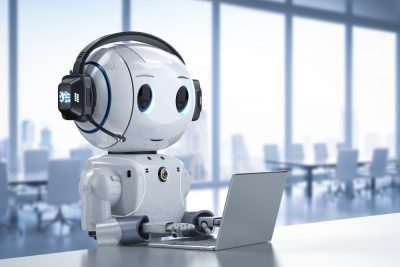To succeed, insurers must advance chatbot intelligence
To keep up with rapidly advancing technologies and customer expectations, insurance companies must enhance the capabilities of their conversational AI systems.
While chatbots may be confusing and not always helpful, they are still popular among consumers because they are available 24/7. A study has shown that 81% of people prefer self-service options when doing business online.
Although ChatGPT is a promising solution, chatbots are generally not very intelligent. Meeting customer demands will require exploring other methods of enhancing artificial intelligence.
To improve chatbots, your organization should implement three strategies. These strategies can help to increase customer satisfaction, provide more opportunities for business growth, and enhance your reputation.
Assist them in discovering additional solutions
Typically, chatbots have difficulty remembering previous conversations and may not be able to keep up with the context. They rely on a decision tree system that recognizes certain keywords in the user’s input to generate a response, which may not be sufficient. While most customers expect customer service to have access to their previous interactions, only about 15% do.
A major challenge in quickly getting accurate information is connecting the internal record systems that contain valuable data to address customer inquiries and demands. To overcome this, companies can use intelligent process automation to integrate business systems, access important information such as previous orders, payment plans, or insurance claims, and efficiently supply the details through the chat app designed for customer interaction.
Insurance companies offer a chatbot feature that enables users to monitor the status of their insurance claims. Besides, this feature can also assist with more complex inquiries, such as “What are the remaining documents I need to provide?” As chatbots grow more sophisticated, there is an opportunity to combine intelligent automation with conversational AI.
Improve their cognitive skills
If we want to develop a digital assistant that can talk like a human, we need to do more than just connect data to customer chat bubbles. It’s essential to train chatbots to process unstructured data so that they can communicate like humans, rather than forcing humans to communicate like computers.
To enhance enterprise systems, you need expertise in document AI, which can harness capabilities such as intelligent document processing to analyze, interpret, and comprehend unstructured data. This enables you to make better decisions, provide more precise and complete responses to inquiries, and expedite request processing.
Our IDP technology incorporates machine learning to enhance the learning and development of your chatbots over time. By leveraging ML, your customers will avoid repeated frustrations arising from incorrect responses or options. The chatbot stores past conversations and learns from mistakes to make accurate choices in the future. Additionally, these interactions reveal vital information such as customer pain points, leading to improvements in the overall customer experience by evaluating the popularity of services.
Currently, it’s possible to improve your chatbots by adding “brains” through low-code/no-code IDP products. This process doesn’t need significant IT resources and is a simple “plug and play” way to upgrade your digital customer service representative.
Transform them into a detective
Confirming the identity of customers is a major challenge for chatbots. This involves verifying relevant documents like proof of address or identification due to the high rate of identity theft in the United States. However, this verification process should not cause too much inconvenience for users, who may not desire to switch between screens or use a camera to validate their passwords.
AI technology can be used to instantly verify people’s identities by scanning their faces in live videos and photos and comparing them to their official ID photos. This enhances security and improves customer service. Additionally, machine learning technology can quickly identify security issues in documents such as utility bills, tax forms, or earnings statements, making it easy to spot any tampered documents. Gartner predicts that 85% of organizations will use document-centered identity-proofing technology for onboarding procedures by next year. This technology is integrated into your chatbot platform, working like a human brain and quickly adapting to new input, resembling a mini forensics lab.
Get ready to be more personal
According to Forrester analysts, 90% of customer service leaders believe that personalization is essential for the future of automation. Nonetheless, their efforts to transform are being held back by the limitations of current chatbot technology. These leaders acknowledge that improving interactions with digital assistants is crucial as more and more conversations take place online. They also realize that their chatbot must be available constantly across all channels since people now prefer to engage through mobile devices.
OpenAI has released a new chatbot known as ChatGPT, which showcases the capabilities of artificial intelligence in creating personalized experiences. Though there are risks involved, such as potential biases, the technology provides significant benefits to customer interactions. As we previously mentioned, ChatGPT is a highly advanced chatbot that offers sophisticated responses, utilizing AI for optimization. Microsoft is going to add ChatGPT function to its Microsoft 365 suite, connecting it to intelligent document processing. This will improve the chatbot’s capability to comprehend data and offer personalized responses. Right now, ChatGPT requires human oversight for responsible use. However, with additional training and integration with other forms of intelligent automation, it’s expected to change the way chatbots are used in customer service.
To offer an exceptional digital customer experience, utilizing AI-powered technology is essential.


